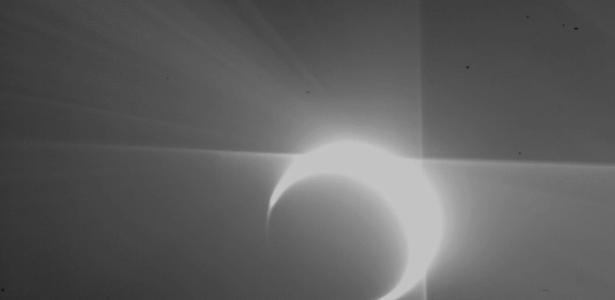The Solar Orbiter probe, from the European Special Agency (ESA) and the US Space Agency (NASA), was able to obtain unprecedented images when it reached less than 8000 km from the surface of Venus.
In the days before this approach, the Solar Orbiter Heliospheric Imager, or SoloHI, telescope aboard the spacecraft captured an unexpected and fascinating view of the planet.
The images show Venus to the left of the video, getting closer and closer, while the Sun is outside the frame, in the upper right corner. The side of the planet opposite the sun appears as a dark semicircle surrounded by a crescent of light — the glow of the “incredibly bright” side of Venus, illuminated by the star, according to NASA.

“Ideally, we would have been able to see some features on the night side of the planet, but there were a lot of signs on the day side,” explained Philip Hess, an astrophysicist at the Naval Research Laboratory in Washington, USA.
“Only a slice of the day side is visible in the images, but it reflects enough sunlight to cause the bright crescent and deflecting rays that appear to be coming from the surface,” he added.
In addition to Venus, two bright stars appear in the background at the beginning of the sequence, before being obscured by the planet. Farthest to the right is the Omicron Tauri. Above, to her left, is Xi Tauri, which is actually a four-star system. Both are part of the constellation Taurus.
This was the second airlift of the Solar Orbiter over Venus. Six more flights are scheduled from 2022 to 2030.
The spacecraft uses Venus’ gravity to bring it closer to the Sun and tilt its orbit, spinning it up and out, so it can spot the star when “looking down.” From this point of view, the Solar Orbiter will eventually capture the first images of the sun’s north and south poles.



![[VÍDEO] Elton John’s final show in the UK has the crowd moving](https://www.lodivalleynews.com/wp-content/uploads/2023/06/Elton-John-1-690x600.jpg)


More Stories
What ChatGPT knows about you is scary
The return of NFT? Champions Tactics is released by Ubisoft
What does Meta want from the “blue circle AI” in WhatsApp chats?